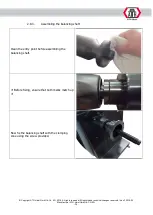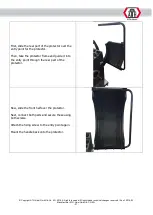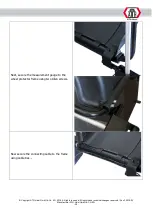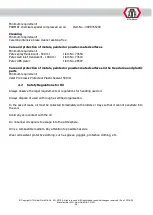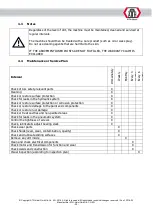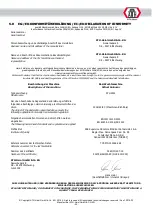
® Copyright ATH-Heinl GmbH & Co. KG, 2019, All rights reserved / Misprints and technical changes reserved / As of: 2019-03
Manufacturer ATH-Heinl GmbH & CO.KG
- 35 -
3.0
OPERATION
3.1
Operating Instructions
Operating Instructions
for
Tyre Servicing
Risks to People and the Environment
Noise danger
Danger of being caught on machine
Danger due to uncontrolled moving parts
Danger from charged dust in the brake system
Protective Measures and Rules of Conduct
Wear close-fitting clothes
Do not wear a watch, rings, chains or similar jewellery when working
Wear ear protection and safety goggles.
Longer hair should be secured by a hair net or other measure
Only use impact wrenches that don’t blow air on the wheel rim.
Clean wheels and tyres only when wet to avoid dust build-up; if possible, use wheel washing
systems.
Remove dust on the brake drums with an extraction bell with suitable industrial vacuum cleaners.
Use category U equipment for asbestos-free dusts and category K1 for asbestos-containing dusts.
(Observe current GUV regulations)
Damaged tyres must not be used.
When inflating the tyre, set up a guard to catch any flying parts. Keep people out of the danger area.
Tyre filling must be monitored and the maximum permissible assembly air pressures must not be
exceeded.
Only operate motor-driven wheel balancers with a protective hood.
For large wheels of trucks and self-driving machines:
-
On machines with vertical wheels, work with heavy tyres (for example, EM tyres) must be
carried out by two people.
-
For tyres with a diameter >1.4 m or a weight >200 kg, fall-protection devices must be used.
Response to faults and hazards
Machine defects must be reported to the manufacturer immediately
Switch off the machine and secure against unauthorised restart
Damage should only be repaired by qualified personnel
First Aid
Inform first aiders (see alarm/emergency plan).
Treat injuries immediately.
Enter into the accident book
Contact emergency services for serious injuries.
Emergency number:
_____________
Ambulance service: _______________
Maintenance
Repair only by instructed and trained persons
Disconnect or secure the machine from the mains power supply for set-up, adjustment,
maintenance or servicing
Clean the machine after operation is ended
Annual check
of the machine by an authorised and trained person
Date:
Signature:
Company:
Place of work:
Operation:





